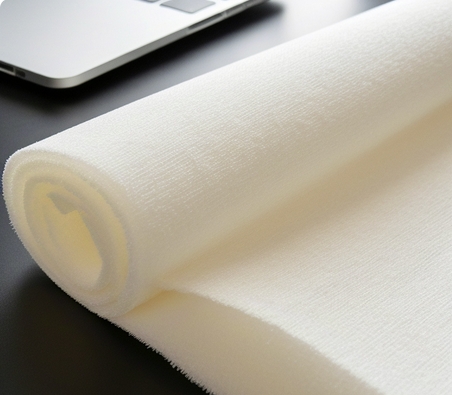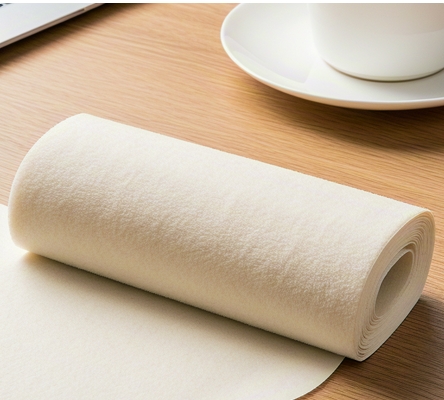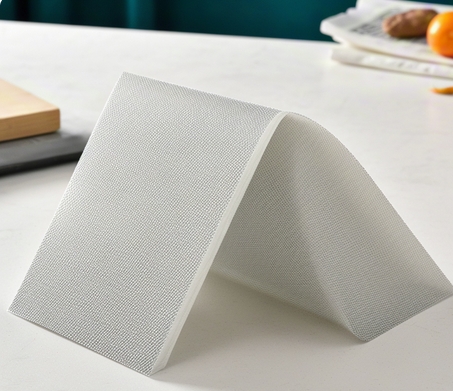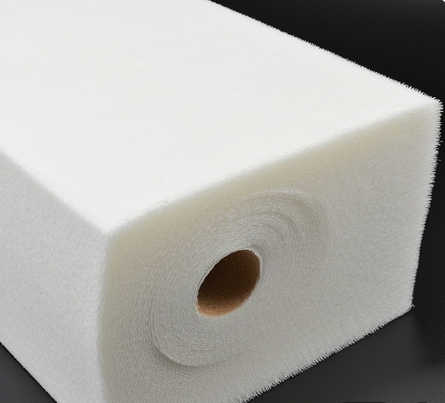Language

Wipe star aviation-grade cleaning consumables are manufactured using innovative hydros pinning process, and the fibers are entangled through ultra-high pressure water flow to form a dense structure, and the material purification process is completed simultaneously during the braiding process. This breakthrough production technology enables the final product to have both ultra-low particulate release (<0.1μm/㎡) and ultra-high cleanliness characteristics, fully complying with the ISO Class 5 clean room standards. Different from traditional chemical bonding processes, our aircraft wipes form a stable structure through physical entanglement, fundamentally eliminating the risk of silicone oil residue or colloidal precipitation, and are especially suitable for key scenarios such as aircraft engine parts cleaning and avionics maintenance.
1.Analysis of core technical indicators: 1. Zero pollution guarantee: After testing by BEST certified laboratory, only 3–5 particles are released per square centimeter, which reduces the risk of particle pollution by 89% compared with ordinary dust-free paper. Practical application cases show that in the surface cleaning operation of Boeing 787 composite materials, it remains stable and lint-free after 20 consecutive uses.
2. Intelligent absorption system: The unique honeycomb-like fiber structure allows each gram of material to carry 7.2 grams of liquid (ASTM D5802 test data). During aviation hydraulic oil leakage treatment, a single A4-sized wipe can absorb 120ml of oil without dripping.
3. Mechanical reinforcement design: adopts bidirectional orthogonal braiding technology, with a longitudinal tensile strength of 12.5N/cm (ASTM D5035 standard), and a lateral tear resistance index exceeding 8N, successfully passed the durability verification of Airbus A350 landing gear lubricant cleaning.
4. Chemical compatibility matrix: After 72-hour solvent-resistant soaking test (including common aeronautical solvents such as acetone and ME), the material swelling rate is controlled within 0.3%, and the F-35 fighter jet stealth coating pretreatment process has achieved a continuous 500-hour degradation record.
Professional application guide: It is recommended that operators use the "three zones and four folding method" to perform precision cleaning: fold the wipe cloth in half three times to form an 8-layer cleaning surface, and operate in the order of cockpit instrument (clean area) → avionics interface (semi-clean area) → engine periphery (polluted area). In the Pratt & Whitney engine blade cleaning case, this method improves the efficiency of single cleaning by 40%, while reducing the probability of secondary pollution to 0.02ppm.
Materials Science Breakthrough: Our aerospace-grade wipes use ultrafine composite fibers with a diameter of 1.2 denier, and form an isotropic structure through fluid dynamic arrangement. This design allows the product to combine the flexibility of cotton materials and the mechanical properties of carbon fibers. When cleaning CFRP composites, it can effectively avoid metal debris residues (confirmed by EDX inspection). Comparative experiments show that under the same cleaning effect, this product reduces the operating force by 65% compared with traditional polyester wipes, significantly reducing the risk of surface scratches of precision components.
Industry verification data: According to the comparative test report of the MADCAP certification laboratory, in the pretreatment process of aircraft skin coating, using this product can achieve the surface cleanliness of Sa2.5 level standard, saving 37% of pretreatment time compared to ordinary industrial wipes. Performance analysis and application guide for professional-grade industrial wipe materials
In the field of precision manufacturing, wipe star non-woven wipes have become a benchmark product in the field of aircraft wipes with their excellent performance indicators. Compared with traditional cheesecloths that are prone to wear, laboratory test data show that it has a 42% service life, significantly reducing rework rate and consumable costs. The wipe cloth adopts a micron-scale fiber braiding process, with a surface friction coefficient controlled in the range of 0.15-0.25, making it an ideal choice for coating pretreatment and optical component cleaning.
The key performance advantages are reflected in three aspects: first, its nonwoven structure forms a three-dimensional mesh filter layer, effectively intercepting particles above 0.3μm, and reaching the ISO Class 3 standard in the cleanliness test of the semiconductor manufacturing process; second, FDA-certified food-grade polymer materials fundamentally eliminate chemical residues, and military laboratory comparison tests show that its pollutant residue is 98% lower than that of cotton rags; third, the unique star-shaped cross-sectional fiber design makes the liquid absorption rate reach 8ml/s, far exceeding the requirements of ASTM D5725 standard.
As a professional aviation wipe, its application scenarios cover the entire industrial chain: in the Boeing 787 composite fuselage treatment, the low lint-up characteristics are perfectly adapted to the continuous operation of the automatic robotic arm; in the weapon system maintenance of the Lockheed Martin F-35 fighter, the material with a tear resistance strength of 45N/mm² successfully passed 2,000 bending tests. Actual cases show that on the Airbus A350XWB assembly line, the product improves the cleaning efficiency before coating by 60%, saving 3.7 hours on a single machine.
The industry application matrix covers four major areas:
1. In terms of aviation manufacturing, it is suitable for oil removal and carbon fiber surface treatment of titanium alloy components.
2. Precision instrument maintenance, especially CT scanner rail cleaning and mass spectrometer ion source maintenance
3. Energy equipment field has been successfully applied to Siemens gas turbine blade maintenance
4. Rail Transit Industry, Zero fiber residues are achieved in the cleaning of Fixing EMU gearboxes.
Tags:
RELATED RESOURCES

7 Questions on Selecting Ultrafine Dust-Free Wipes: Comparative Analysis of Ultrafine Fiber Cleaning
Comparative analysis of ultra-fine dust-free cloth and ultra-fine dust-free cloth: professional selection guid......
More

The difference between dust-free paper and wiping paper is revealed. 15 years of experience in the f
In the field of industrial cleaning consumables, dust-free paper and wipe paper are two core products often ca......
More

Clean room Wipes Buying Guide: 6 Key Indicators for Professional Purchasers.
Clean Room Dust-Free Wipe Cloth Selection Guide: A Decision Framework for Professional Procurement PersonnelIn......
More

SMT steel mesh wiping paper material characteristics: double-sided wiping process diagram
The scientific and professional-grade SMT steel mesh wipe paper with material configuration is mainly equipped......
More
Related Products
Room 101, Building 1, Angeer Factory, No.4, Hetian Road, Shatian Community, Kengzi Street, Pingshan District, Shenzhen, Guangdong, P.R. China 518122
info@wipestar.com
+86-755-89616775
+86-755-89616773
Related Products
RELATED RESOURCES

7 Questions on Selecting Ultrafine Dust-Free Wipes: Comparative Analysis of Ultrafine Fiber Cleaning
Comparative analysis of ultra-fine dust-free cloth and ultra-fine dust-free cloth: professional selection guid.........
More

The difference between dust-free paper and wiping paper is revealed. 15 years of experience in the f
In the field of industrial cleaning consumables, dust-free paper and wipe paper are two core products often ca.........
More
WIPESTAR
微信官方公众号